Dir: László Benedek
Star: Hilde Krahl, Bernhard Wicki, Ursula Herking, Klaus Kinski
By coincidence this was watched not long after Decision Before Dawn, with which it shares some similarities in setting – both take place in Germany, during the last days of World War II. But they approach the topic from radically different angles, as they inevitably must, as a result of their very distinct origins. DBD was a story told from the Allied viewpoint, even if it had a German (working as a spy) at its main character. Kinder is from the perspective of those being invaded, and though neither film soft-pedals the devastation inflicted on the country, this is certainly the more downbeat entry.
A varied group of six women are thrown together by a common concern. Their teenage sons (and, in one case, brother) have absconded from their school in Stettin (now part of Poland, and called Szczecin), running off to join the battle against the encroaching Soviet forces. The women decide to head to the front and retrieve their children, taking them to safety by whatever means is necessary. It’s a journey fraught with danger, and when they reach the battle-zone, discover that getting their sons back is not going to be as easy as you might expect. They encounter resistance from both the commanding officers, who need every pair of hands they can find, and also the young recruits.
Kinski’s role in this is small, but fairly significant, in terms of establishing the downbeat, almost fatalistic atmosphere. On their route, the women take shelter in an abandoned inn for the night, only to be startled by the arrival of a platoon of soldiers, under the command of their Lieutenant (Kinski). He’s struggling to keep them in check, as he explains to the women:
“They’re stragglers, you see? They were collected from front command centers, and off the street. They gave them to me and said, “Take them to the front for a while.” Of course they don’t want to. They’ve had enough. They lay on the side of the road for a while and I don’t know what they thought about. Maybe about home, or something like you. But it’s of no use to them. They all have to go back. And perish.”
Because of this, to keep the group together, he has to enforce absolute discipline. The next morning, one of his soldiers refuses to go on, and to the horror of the women, is taken outside by the Lieutenant and shot as a deserter. Coincidentally, the victim is played by another future German star, early in his career: making his movie debut was Maximilian Schell, who would go on to win a Best Actor Oscar in the sixties, for his performance Judgment at Nuremburg. This was the only film in which they would work together.
This incident largely sets the bleak tone of the movie. [Skip this and the next paragraph is you want to avoid spoilers] At the front, one of the women, the widowed Helene Asmussen (Krahl), forms a relationship with Hauptmann Dornberg (Wicki), commander of the battalion where her son has been sent. [Wicki was also in Paris, Texas, where he played Doctor Ulmer, the man who rescues Harry Dean Stanton after he wanders out of the desert. Four years later, he’d direct the not dissimilar Die Brücke, also about teenage boys who volunteer in the last days of the conflict] She eventually succeeds in persuading him to disobey orders and save his men from inevitable death, by abandoning the battalion’s hopeless position to retreat instead, and letting the surviving boys go.
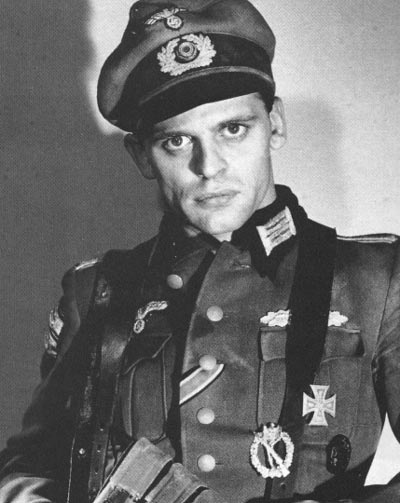 But just as they’re about to depart, the Russian stage an attack, and all men in uniform are recalled into action. The film ends with the mothers watching as their sons, once again, head off to face the enemy. “God in heaven, they’re really going back,” says the female pastor who has been part of the group. “Leave God out of it,” replies another mother. “It’s man’s doing. It’s always man’s doing…” The End. There is an alternative finale, which had me expecting a less downbeat version in which the families are re-united and escape from the front. Nope. It’s basically the same, only with slightly different final dialogue: instead of offering commentary about God and man, it’s a simple, “They’ve forgotten us. They will always forget us.” The End.
But just as they’re about to depart, the Russian stage an attack, and all men in uniform are recalled into action. The film ends with the mothers watching as their sons, once again, head off to face the enemy. “God in heaven, they’re really going back,” says the female pastor who has been part of the group. “Leave God out of it,” replies another mother. “It’s man’s doing. It’s always man’s doing…” The End. There is an alternative finale, which had me expecting a less downbeat version in which the families are re-united and escape from the front. Nope. It’s basically the same, only with slightly different final dialogue: instead of offering commentary about God and man, it’s a simple, “They’ve forgotten us. They will always forget us.” The End.
The screenplay was based on a book, Hauen Sie ab mit Heldentum, written by German author Herbert Reinecke and originally published as a serial in the magazine Quick. Reinecke worked in the propaganda department of the Waffen SS during the war. But save for a brief period in the wilderness immediately after its conclusion, “being a strong supporter of the Nazi regime,” according to his IMDb bio, doesn’t seem to have impacted his career too badly. He wrote several Edgar Wallace adaptations under the name of Alex Berg, including another Klaus Kinski vehicle, Creature with the Blue Hand, and found great success as a TV writer, with the series Derrick, which ran for 24 years. This is reported to be the performance which got Werner Herzog interested in Klaus as an actor. In My Best Fiend, Herzog recounts how Kinski’s character fell asleep at a table, and the actor had to portray the awakening. According to The Encyclopedia of Werner Herzog, “How he did it, forever determined the choice of the main actor in the career of Herzog.”
This is a solidly assembled if rather monotonous piece of work, with an anti-war message which, if anything, is probably over-emphasized. As in Decision, there’s a definite sense that Germany is – or at least, Germans are – depicted as the victim/s, rather than the aggressor/s. But given the time-frame, less than a decade after the end of a war that left the defeated nation completely devastated, it’s still impressive that the local film industry was able to face the nation’s recent history in such a relatively forthright manner. The performances, particularly from the women, are key in establishing the emotional heart of the film, and their love provides a worthwhile counterbalance to the destruction. Still, while I acknowledge it’s merits, this not a cinematic experience I likely have very much interest in going through again.
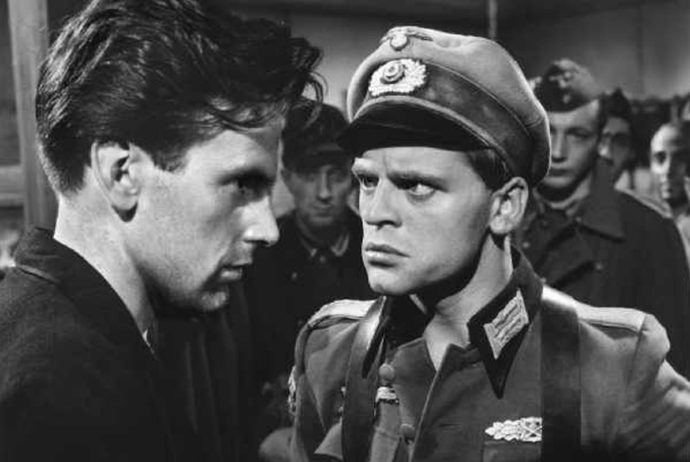
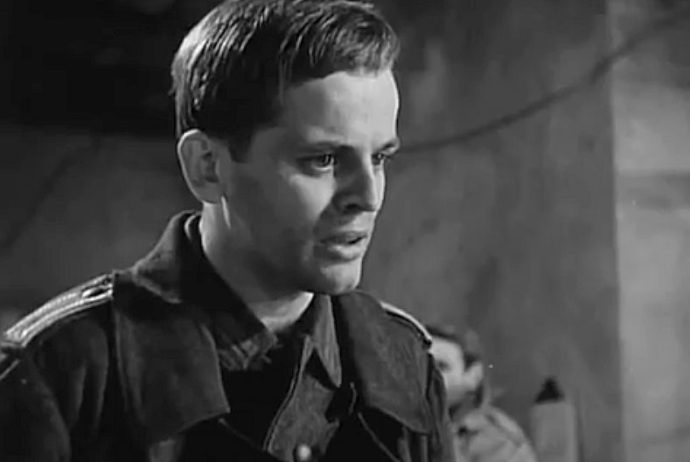
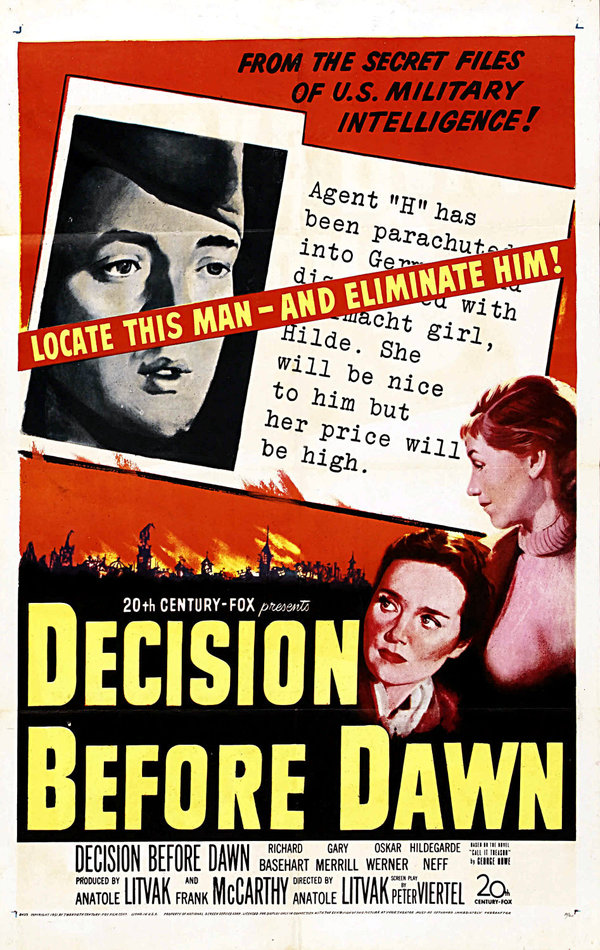 It takes place in the later stage of World War II, with the Allied forces closing in on Germany, but still facing a battle from the Nazi armies. Intelligence officer Colonel Devlin obtains permission from his superiors to recruit agents out of German prisoners of war, and send them them back into their country to obtain crucial intelligence about the location of Axis units. The two chosen are codenamed “Happy” (Werner) and “Tiger” (Blech), and are parachuted behind enemy lines, along with American communications specialist, Lieutenant Rennick (Basehart).
It takes place in the later stage of World War II, with the Allied forces closing in on Germany, but still facing a battle from the Nazi armies. Intelligence officer Colonel Devlin obtains permission from his superiors to recruit agents out of German prisoners of war, and send them them back into their country to obtain crucial intelligence about the location of Axis units. The two chosen are codenamed “Happy” (Werner) and “Tiger” (Blech), and are parachuted behind enemy lines, along with American communications specialist, Lieutenant Rennick (Basehart).
 It opens with Don Jose (Nero), an officer in the Spanish army who is currently stationed in Seville. At a local factory, he encounters Carmen (Aumont), a ravishing Gypsy girl, who has just been given a job there. This doesn’t last long, after she takes offense at the comments of another worker, and Don Jose is given the job of escorting Carmen to the local police station. She deceives him and escapes, which leads to him being demoted down the ranks, but when they meet again, a passionate if destructive relationship begins.
It opens with Don Jose (Nero), an officer in the Spanish army who is currently stationed in Seville. At a local factory, he encounters Carmen (Aumont), a ravishing Gypsy girl, who has just been given a job there. This doesn’t last long, after she takes offense at the comments of another worker, and Don Jose is given the job of escorting Carmen to the local police station. She deceives him and escapes, which leads to him being demoted down the ranks, but when they meet again, a passionate if destructive relationship begins.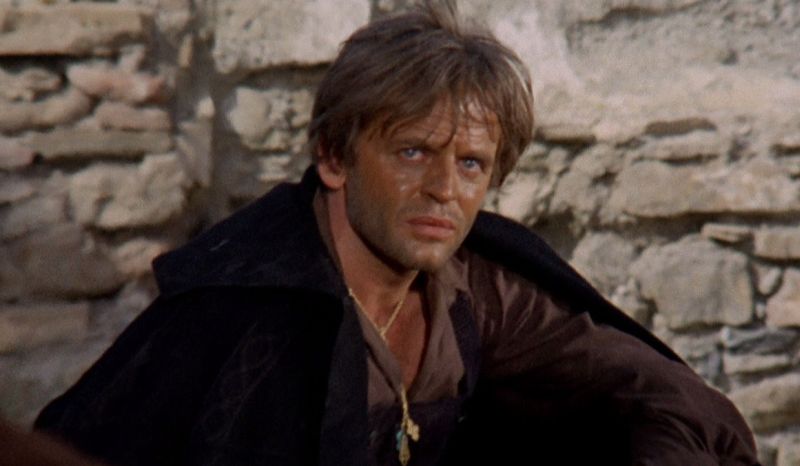 Particularly in the first half, the pacing is significantly more stately than you might expect, with much more drama than action. But it never looks less than impressive, though that might just be the result of me knowing that future triple-Oscar winner Vittoria Storaro worked on this as a camera operator. Nero holds the attention of the audience as easily as you’d expect, and Aumont, the daughter of Maria Montez, is also effective enough in a role which feels as if it was written with Sophia Loren in mind. [Or even Gina Lollobrigida; her cousin, Guido, is actually in the cast]
Particularly in the first half, the pacing is significantly more stately than you might expect, with much more drama than action. But it never looks less than impressive, though that might just be the result of me knowing that future triple-Oscar winner Vittoria Storaro worked on this as a camera operator. Nero holds the attention of the audience as easily as you’d expect, and Aumont, the daughter of Maria Montez, is also effective enough in a role which feels as if it was written with Sophia Loren in mind. [Or even Gina Lollobrigida; her cousin, Guido, is actually in the cast]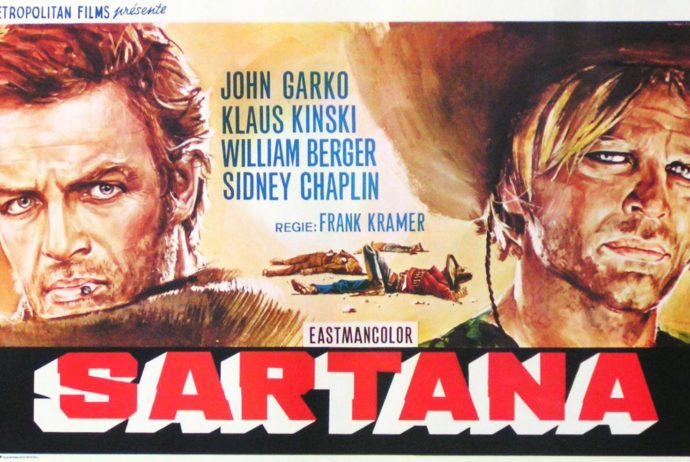


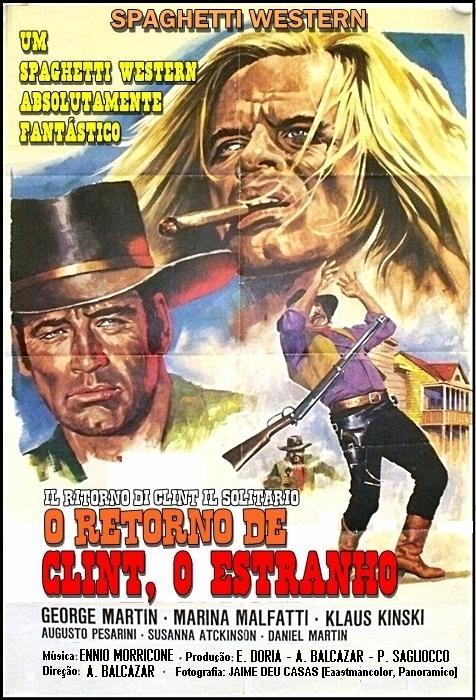 It’s apparently a semi-sequel, semi-remake of a film made five years earlier, Clint the Stranger. It also starred Martin, but for the sequel, both the hero and film were renamed in some territories, in order to cash in on the popularity of the previous year’s They Call Me Trinity, which is not related in any way. This was sometimes credited as being directed by Martin too, but appears instead to have been the work of Balcázar, who seems generally regarded as in the lower-tier of spaghetti Western auteurs. It wasn’t the first film in which Martin had appeared alongside Kinski; they had both also starred in
It’s apparently a semi-sequel, semi-remake of a film made five years earlier, Clint the Stranger. It also starred Martin, but for the sequel, both the hero and film were renamed in some territories, in order to cash in on the popularity of the previous year’s They Call Me Trinity, which is not related in any way. This was sometimes credited as being directed by Martin too, but appears instead to have been the work of Balcázar, who seems generally regarded as in the lower-tier of spaghetti Western auteurs. It wasn’t the first film in which Martin had appeared alongside Kinski; they had both also starred in 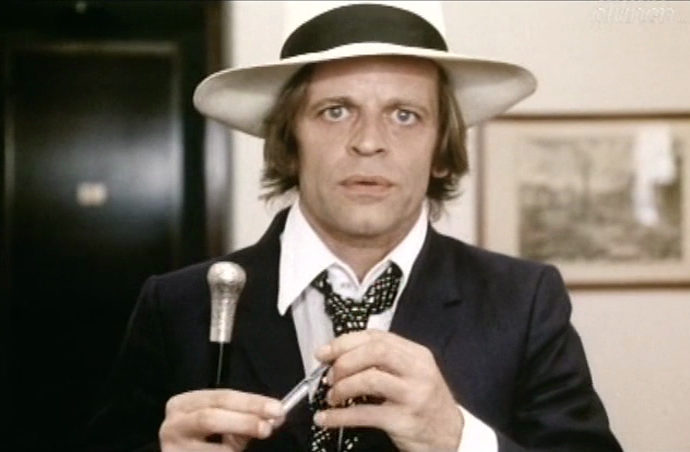

 The lack of anything even remotely explicit probably works in the film’s best interests, since you will remember it, when a million soft-core flicks of the decade have long been forgotten. It’s apparently based on a book by the real Lynn Keefe, under the “How did a…” title. Though I imagine it’s probably as truly “autobiographical” as the book on which Nastassja’s Passion Flower Hotel was supposedly based. But, from the loss of the heroine’s pregnancy on, it seems to zig when you think it’s going to zag, and is all the better for it. I’ll even forgive the obvious stunt casting, since Sam’s fashion sense is a perfect time capsule of the era. There’s a certain tasty irony present, both in the character he plays and in him being on the receiving end of Lynn’s freak-out when she discovers he has blown all their cash.
The lack of anything even remotely explicit probably works in the film’s best interests, since you will remember it, when a million soft-core flicks of the decade have long been forgotten. It’s apparently based on a book by the real Lynn Keefe, under the “How did a…” title. Though I imagine it’s probably as truly “autobiographical” as the book on which Nastassja’s Passion Flower Hotel was supposedly based. But, from the loss of the heroine’s pregnancy on, it seems to zig when you think it’s going to zag, and is all the better for it. I’ll even forgive the obvious stunt casting, since Sam’s fashion sense is a perfect time capsule of the era. There’s a certain tasty irony present, both in the character he plays and in him being on the receiving end of Lynn’s freak-out when she discovers he has blown all their cash.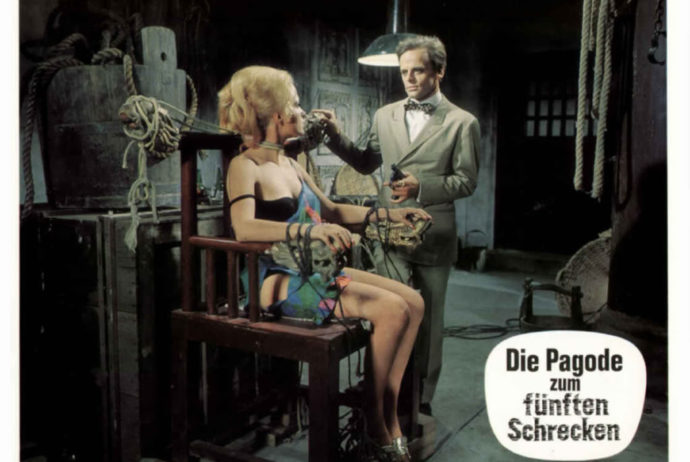
 The parade of guest stars seems to solve a similar purpose. The Dragons are a strangely Caucasian lot, considering where they’re operating, being played by Dan Duryea, Brian Donlevy, George Raft and Christopher Lee, which is an impressive supporting cast. Or would be, if they were given anything meaningful to do. Instead, they get little more than two scenes, shot suspiciously indoors (particularly compared to the rest of the film, which flaunts its Hong Kongness with blatant abandon), so you wonder if they even got a weekend in the colony out of it. I think the appearance of Japanese guest singer Yukari Ito also falls into this category, apparently a shallow and rather obvious early stab at the international box-office.
The parade of guest stars seems to solve a similar purpose. The Dragons are a strangely Caucasian lot, considering where they’re operating, being played by Dan Duryea, Brian Donlevy, George Raft and Christopher Lee, which is an impressive supporting cast. Or would be, if they were given anything meaningful to do. Instead, they get little more than two scenes, shot suspiciously indoors (particularly compared to the rest of the film, which flaunts its Hong Kongness with blatant abandon), so you wonder if they even got a weekend in the colony out of it. I think the appearance of Japanese guest singer Yukari Ito also falls into this category, apparently a shallow and rather obvious early stab at the international box-office.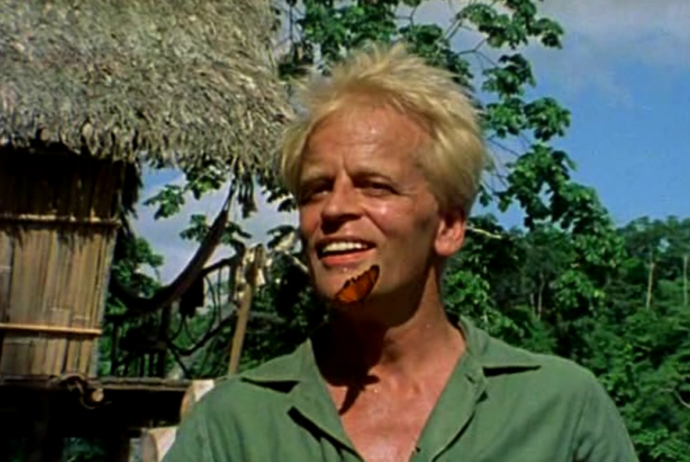
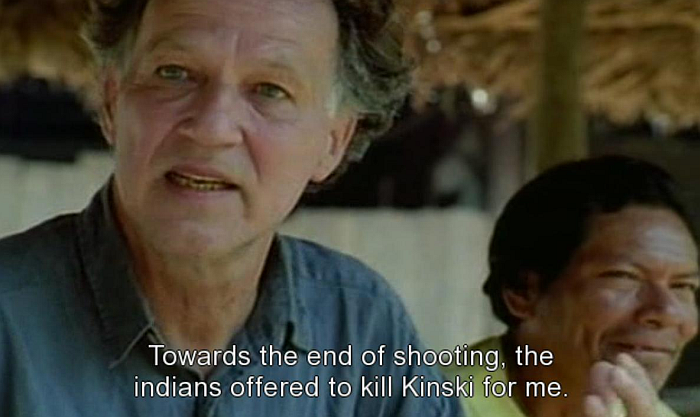
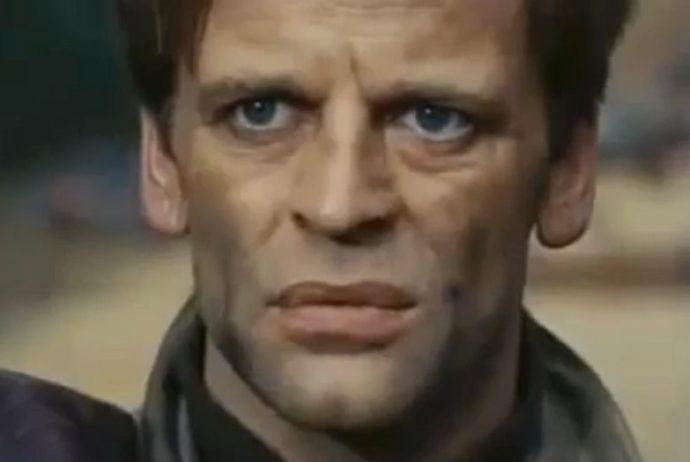
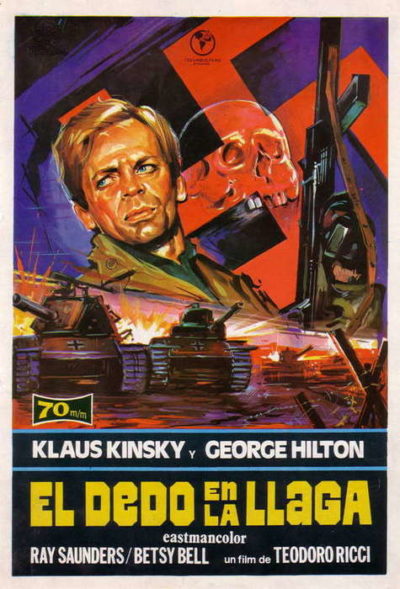 Carr and Mallory are literally up against the wall, when fate intervenes, in the shape of an ambush by German troops. The prisoners seize the chance to escape, and Sheppard, the only survivor of his squad goes with them. He’s quite open about the fact that he’s going to bring them back and make them face justice, and I have to say, Carr is remarkably chill about the prospect. [Mallory, meanwhile, is remarkably chill about virtually everything. He spent the night before his scheduled execution singing hymns, right up until his cellmate had had enough] After successfully ambushing a group of Nazi soldiers, they acquire a jeep, with the aim, expressed by Carr, of keeping as far away from actual fighting as possible. This takes them to the town of San Michele, which initially appears deserted. Except, the inhabitants have actually been in hiding. They suddenly pour out to greet what they believe to be the forces of liberation, rather than two war criminals and an officer with a stick up his ass.
Carr and Mallory are literally up against the wall, when fate intervenes, in the shape of an ambush by German troops. The prisoners seize the chance to escape, and Sheppard, the only survivor of his squad goes with them. He’s quite open about the fact that he’s going to bring them back and make them face justice, and I have to say, Carr is remarkably chill about the prospect. [Mallory, meanwhile, is remarkably chill about virtually everything. He spent the night before his scheduled execution singing hymns, right up until his cellmate had had enough] After successfully ambushing a group of Nazi soldiers, they acquire a jeep, with the aim, expressed by Carr, of keeping as far away from actual fighting as possible. This takes them to the town of San Michele, which initially appears deserted. Except, the inhabitants have actually been in hiding. They suddenly pour out to greet what they believe to be the forces of liberation, rather than two war criminals and an officer with a stick up his ass.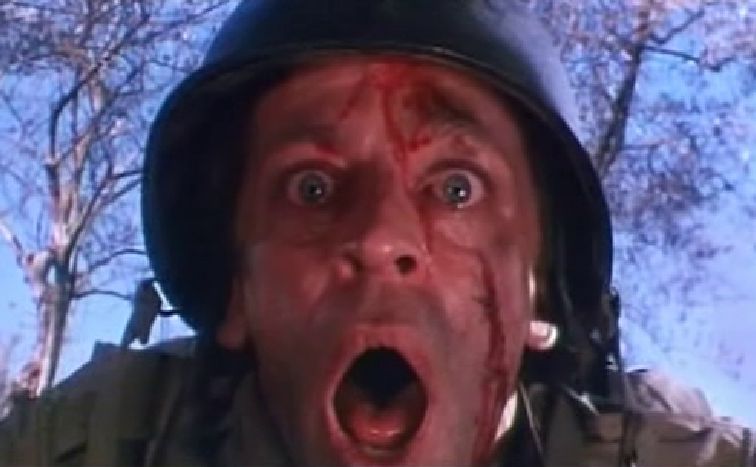

 This moral ambivalence is typical of the spaghetti Western, where it’s less black hats vs. white hats, than various shades of muddy grey facing off. Here, we have not-so-good guys pretending butter wouldn’t melt in their mouth, as well as a guy who is being framed and sent to the gallows, because of anti-social tendencies – yet, as the ending shows, Chester may not be entirely innocent either. Curiously, this was the second film I’ve seen, in relatively short order, where Kinski plays a man convicted of a murder he didn’t commit, following on from June’s
This moral ambivalence is typical of the spaghetti Western, where it’s less black hats vs. white hats, than various shades of muddy grey facing off. Here, we have not-so-good guys pretending butter wouldn’t melt in their mouth, as well as a guy who is being framed and sent to the gallows, because of anti-social tendencies – yet, as the ending shows, Chester may not be entirely innocent either. Curiously, this was the second film I’ve seen, in relatively short order, where Kinski plays a man convicted of a murder he didn’t commit, following on from June’s